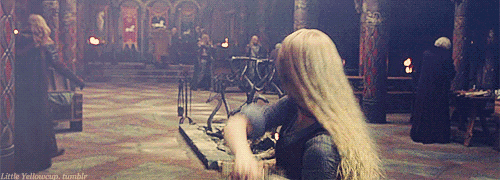As a child, I loved two things: dinosaurs and swords (and you can probably see why I’ve wound up at HMNS). Like many children, the movies I watched informed how I’d play – and having grown up on classics like The Princess Bride (which you can watch at HMNS on March 21) and Star Wars, it’s no surprise that play sword fighting was my favorite activity. I had at the ready all the materials I needed in my backyard: a stick for a sword, a tree as a stand-in dragon; what else could a kid ask for? As a teenager, this interest continued as my friends and I would craft “weapons” (nothing dangerous, I assure you) from objects around the house, but it wasn’t until college that I really started to learn about and appreciate the history of the sword and how one is to be used properly.
 While there are many, many types of swords, used throughout different times and places as prize fighting items, the idea behind their design and how to use them has remained the same (no, not just the pointy-end-goes-in-bad-guy concept). Swords were meant to be a very economical way to fight, allowing the knight (or the dueler, etc.) to expend as little energy as possible while holding their opponent at bay. Aided by a good foundation in basic mechanics (i.e., fulcrums and levers), one seeks to use their appendages with the most efficiency — a small bit of movement and a twist of the wrist should be all one needs to propel the blade through your opponent’s defense.
While there are many, many types of swords, used throughout different times and places as prize fighting items, the idea behind their design and how to use them has remained the same (no, not just the pointy-end-goes-in-bad-guy concept). Swords were meant to be a very economical way to fight, allowing the knight (or the dueler, etc.) to expend as little energy as possible while holding their opponent at bay. Aided by a good foundation in basic mechanics (i.e., fulcrums and levers), one seeks to use their appendages with the most efficiency — a small bit of movement and a twist of the wrist should be all one needs to propel the blade through your opponent’s defense.
 Building from this principle, swords have been designed to be best suited to different fighting environments. The broad sword, invented in the Middle Ages, was best suited for combat and dueling. The aptly named cut-and-thrust sword is designed to cut and thrust. The rapier was designed with similar intent, made to work like a giant ice pick, so that you could fight in the crowded city streets of France and Italy. The modern sport of fencing was invented when a French blade was blunted – also called foiling the blade (this is where the word “foil” comes from).
Building from this principle, swords have been designed to be best suited to different fighting environments. The broad sword, invented in the Middle Ages, was best suited for combat and dueling. The aptly named cut-and-thrust sword is designed to cut and thrust. The rapier was designed with similar intent, made to work like a giant ice pick, so that you could fight in the crowded city streets of France and Italy. The modern sport of fencing was invented when a French blade was blunted – also called foiling the blade (this is where the word “foil” comes from).
 So now you’re up-to-date on swords. But you know you want to learn more (and how could I blame you; swords are awesome!). In that case, you should join us for some upcoming events where you can learn the art of sword fighting (no prior experience necessary!). John Clements, one of the premier swordsmen of our age, will talk about the sword of the 13th century and the knights who wielded them (on Feb. 26) and teach you the Art of Defense in an evening workshop (on Feb. 27).
So now you’re up-to-date on swords. But you know you want to learn more (and how could I blame you; swords are awesome!). In that case, you should join us for some upcoming events where you can learn the art of sword fighting (no prior experience necessary!). John Clements, one of the premier swordsmen of our age, will talk about the sword of the 13th century and the knights who wielded them (on Feb. 26) and teach you the Art of Defense in an evening workshop (on Feb. 27).
To take advantage of this special offer and reserve your spot, purchase your ticket at the HMNS Box Office or call 713.639.4629 and present coupon code $10offsc to receive $10 off your ticket. (Discount not available on online ticket purchases.)
 MEDIEVAL LECTURE
MEDIEVAL LECTURE
13th Century Sword & Buckler: Origins of the Knightly Fighting Arts
John Clements, ARMA
Weds., Feb. 26, 6:30 p.m.
The liberal arts in medieval times were those subjects studied by a free man—who was free precisely because he was armed and trained in the fighting arts. Much of what is known of 13th-century sword and buckler training is documented in the only surviving fencing manual of the period. John Clements, martial arts historian and director of ARMA (Association for Renaissance Martial Arts), will describe the science of defense developed in this period, as well as the arms, armor and chivalric work of knights. This lecture will be followed by a live demonstration of medieval martial arts.
Click here to purchase tickets online.
ADULT CLASS
Introduction to the Sword
Thurs., Feb. 27, 6 p.m.
Tickets $75, Members $65
The sword is an important symbol of power—from the gladius of gladiators to the light saber of the Jedi. It has been used to change history. Whether leading a conquest of the Normans or to helping to secure the seed of democracy, the sword is an important symbol of martial skill. Thought of as a “lost art,” swordsmanship is still taught using the writing and illustrations passed down from Renaissance sword masters. Learn the basics of this martial art in this class lead by John Clements, director Association of Renaissance Martial Arts.
Click here to purchase tickets online.
THE SWORDSMAN: John Clements
John Clements is a leading authority on historical fencing and the world’s foremost instructor of Medieval and Renaissance fighting methods. As a long-time Western martial artist who has been studying historical fencing since 1980, John is the most prolific writer on the subject of historical fencing. He has practiced European cut-and-thrust swordplay and for more than thirty years, taught on it in 16 countries, and researched arms and armor on four continents. He instructs both nationwide as well as internationally.







